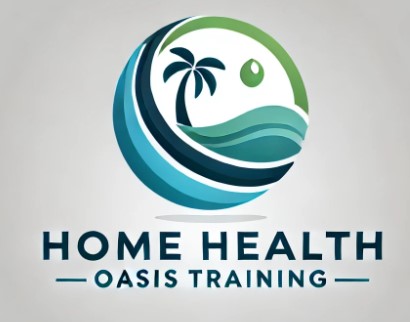How Home Health Care Regulations Protect Patients and Providers
Home health care is a rapidly growing sector within the healthcare industry, providing individuals with the opportunity to receive medical care and support in the comfort of their own homes. This care encompasses a wide range of services, including nursing care, physical therapy, medication management, and even assistance with daily living activities. As the demand for home health care services continues to grow, it becomes increasingly important to understand how regulations play a vital role in safeguarding both patients and healthcare providers. These regulations ensure that patients receive high-quality care while also protecting healthcare workers from potential risks, ensuring their safety, and helping them adhere to ethical and professional standards.
This blog explores the protections that home health care regulations offer to both patients and providers, covering aspects such as safety measures, liability issues, and the rights of patients. It also delves into the ways in which regulations create a structured environment for providers to deliver care while ensuring accountability, transparency, and consistent standards.
The Role of Regulations in Home Health Care
Regulations in the home health care sector are primarily designed to set minimum standards of care to ensure the safety, quality, and efficacy of the services provided. These rules are created and enforced by both federal and state authorities, as well as accrediting organizations. The overarching goal of these regulations is to promote high-quality patient care, protect patient rights, ensure patient safety, and provide a safe working environment for healthcare providers. Regulations are typically designed to cover several aspects of home health care, including licensure requirements, staffing qualifications, training standards, patient assessment procedures, and the protocols for delivering care.
The Centers for Medicare & Medicaid Services (CMS), an agency within the U.S. Department of Health and Human Services, plays a key role in regulating home health care services, particularly for patients who are covered under Medicare. CMS sets forth conditions of participation for home health agencies, ensuring that they meet federal standards of care. Additionally, state health departments and private accrediting organizations, such as The Joint Commission, often have their own set of regulations that enhance patient protections and contribute to the overall safety of home health care environments.
Protections for Patients
1. Patient Safety Measures
The most important protection that regulations provide for patients is the assurance that they receive safe and effective care. Home health care regulations require that providers adhere to stringent infection control protocols, follow safe medication administration procedures, and monitor patients for adverse reactions to treatments. This ensures that patients are not exposed to avoidable risks that could compromise their health or lead to complications.
Regulations also mandate that providers regularly assess the patient’s health status, document progress, and adjust care plans as necessary. Home health agencies are required to have protocols in place for handling medical emergencies, such as notifying physicians or seeking emergency services if a patient’s condition worsens. Additionally, healthcare providers must have a clear understanding of the patient’s medical history and current health condition, which can be vital to preventing errors in care.
For example, home health agencies must provide clear guidance on medication administration, ensuring that patients or their caregivers receive proper training on how to manage medications, monitor for side effects, and prevent potential drug interactions. By providing adequate education and oversight, regulations help reduce medication errors and adverse reactions that could otherwise put patients at risk.
2. Patient Rights and Consent
Home health care regulations also play a critical role in protecting the rights of patients. One of the key patient rights in home health care is the right to informed consent. Before any treatment is administered, patients (or their legal representatives) must be provided with all necessary information regarding their care options, potential risks, and expected outcomes. This ensures that patients make informed decisions regarding their care and are not subjected to unwanted or inappropriate treatments.
Regulations also emphasize patient confidentiality and the safeguarding of personal health information. Healthcare providers must adhere to strict guidelines regarding the privacy and protection of patient data, which are often enforced under laws like the Health Insurance Portability and Accountability Act (HIPAA). This ensures that sensitive patient information is not disclosed without appropriate consent, protecting patients from potential breaches of privacy.
Furthermore, home health care regulations require agencies to involve patients in their own care plans, ensuring that patients’ preferences, cultural beliefs, and values are taken into consideration when creating treatment protocols. This patient-centered approach promotes respect for the individual’s autonomy and helps ensure that care is delivered in a way that aligns with the patient’s wishes and needs.
3. Complaints and Grievance Mechanisms
Patients are also protected by regulations that establish clear avenues for them to voice complaints or concerns about the care they receive. If a patient feels that their rights have been violated or that they are not receiving the appropriate level of care, regulations typically require home health agencies to provide a formal grievance process. This process ensures that complaints are addressed in a timely manner and that corrective actions are taken when necessary. By providing a formal mechanism for patients to express dissatisfaction, regulations foster accountability among home health care providers and help ensure that patient concerns are taken seriously.
Protections for Providers
1. Workplace Safety
For healthcare providers, regulations help create a safer working environment. Home health care workers face unique challenges that can put them at risk, including exposure to infectious diseases, physical injury from lifting patients, and the potential for violent behavior from patients with cognitive impairments. To protect healthcare workers, regulations require home health agencies to implement appropriate workplace safety measures.
For example, regulations typically mandate that home health agencies provide training on proper lifting techniques to prevent musculoskeletal injuries, especially when caring for patients with mobility issues. Additionally, safety measures such as providing personal protective equipment (PPE) and ensuring that workers are equipped with the necessary tools to safely perform tasks like administering injections or monitoring vital signs are essential in reducing the risk of exposure to infections or injuries.
In some cases, home health care providers may be at risk of emotional or psychological stress due to the nature of their work. Regulations often require agencies to offer support services such as counseling or peer support programs to help workers manage the emotional challenges of providing care. This support can help mitigate burnout and promote the long-term well-being of healthcare workers.
2. Liability and Insurance
Liability issues are a significant concern for home health care providers, as they are responsible for delivering care in patients’ homes, often without the direct supervision of a physician or nurse supervisor. Regulations help protect providers by setting standards for professional liability insurance, ensuring that they are covered in the event of errors or accidents during patient care.
By enforcing these liability standards, regulations ensure that home health agencies have the financial resources to address claims of malpractice or negligence. These protections help ensure that healthcare workers are not left personally liable for incidents that may arise during patient care, while also holding providers accountable for maintaining high standards of practice.
3. Training and Qualifications
Regulations often require home health care providers to meet specific qualifications and complete ongoing education to maintain their licensure. These standards help ensure that providers have the necessary skills and knowledge to deliver high-quality care. For example, nurses and therapists must have relevant certifications, and home health aides are required to complete a specified number of training hours before they can provide care.
By setting clear guidelines for training and qualifications, regulations help protect healthcare workers from being assigned tasks outside their scope of practice, ensuring that they are equipped to perform their duties safely and effectively. This also benefits patients, as it ensures that care is provided by competent and well-trained professionals who can make informed decisions and respond appropriately to changes in a patient’s condition.
Conclusion
Home health care regulations play a crucial role in protecting both patients and healthcare providers. These regulations set standards for the quality of care, ensure patient safety, and safeguard patient rights while also establishing a safe working environment for healthcare workers. By addressing issues related to patient care, liability, workplace safety, and professional qualifications, regulations create a framework that promotes accountability, transparency, and consistency in home health care.
For patients, these regulations offer important protections, such as ensuring access to safe, effective, and compassionate care, safeguarding patient privacy, and providing avenues for complaints and grievances. For healthcare providers, regulations help mitigate liability risks, promote workplace safety, and ensure that workers have the necessary training and support to perform their jobs effectively.
In conclusion, the regulatory landscape in home health care is critical for ensuring that both patients and providers are protected. As the demand for home-based care continues to rise, the importance of maintaining and enhancing these regulations will only grow, contributing to the ongoing improvement of the quality and safety of care provided in the home setting.
Editor's Pick
Leave A Comment
Related Posts
Transition from OASIS-E to OASIS-E1: Key Changes and Implications for […]
Importance of Clinical Narrative and Nurse Teachings while Documenting Home Health OASIS Assessments
Importance of Clinical Narrative and Nurse Teachings while Documenting Home […]
Navigating the Complexities of Medicare and Medicaid Reimbursement for Home […]
Engaging Your Team Around the IPR: Turning Data into Motivation […]
Engaging Your Team Around the IPR: Turning Data into Motivation […]

